Every baker knows the magic happens between mixing and baking. With madeleine baking tips, patience is key. When I first tried these delicate French butter cakes, my impatience ruined the texture. Understanding the consistency of Rested Madeleine Batter transformed everything.
Baking madeleines isn’t just about ingredients—it’s about technique. That crucial resting period turns your simple batter into a culinary masterpiece. Your refrigerator works its magic while you wait.
Understanding this process can make your baking better. The resting time is not just a suggestion—it’s essential. It helps create those iconic, shell-shaped delicacies that melt in your mouth.
Table of Contents
Understanding the Classic French Madeleine
Explore the enchanting world of madeleines, a French dessert loved by many. These small, shell-shaped cakes are more than a sweet treat. They are a culinary art that needs precision and passion.
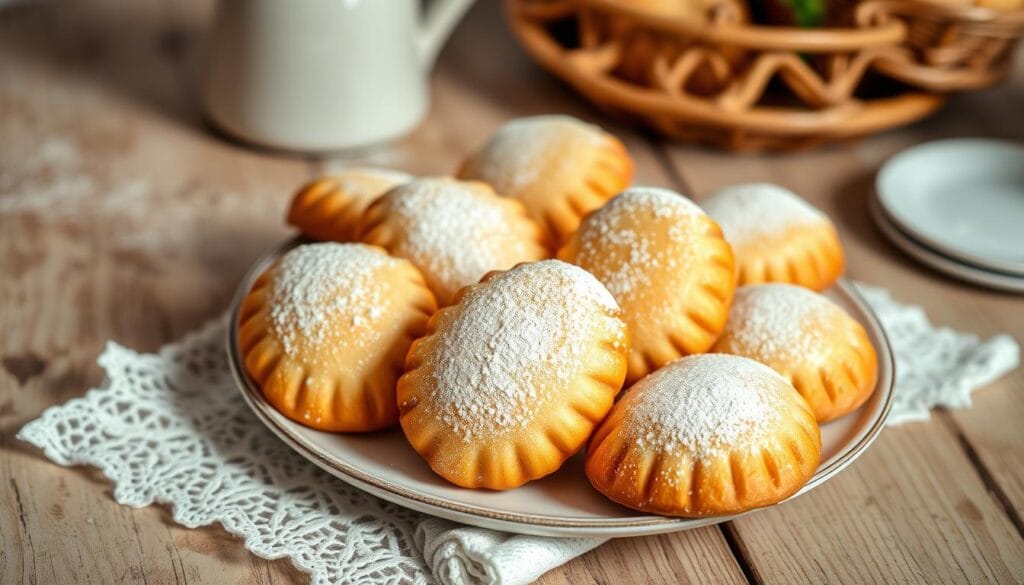
Origins of a Delicate Delicacy
From the Lorraine region of France, madeleines have a long history. They were first made for the French royal court. Over time, baking tips have made this cake a favorite around the world.
The Signature Shell Shape and Texture
What makes madeleines special is their shell shape. They are baked in special molds. A perfect madeleine has a golden outside and a soft, light inside that feels like it melts in your mouth.
- Requires special shell-shaped baking molds
- Characterized by a distinctive hump
- Delicate, sponge-like texture
What Makes a Perfect Madeleine
“A great madeleine is a balance of technique, temperature, and tradition.” – French Pastry Chef
To make the perfect madeleine, you need to focus on a few key things:
| Key Element | Importance |
|---|---|
| Egg Temperature | Room temperature eggs whip better |
| Butter Quality | Slightly cooled melted butter works best |
| Baking Temperature | 350°F ensures golden edges |
| Chill Time | 15 minutes to overnight recommended |
By following these tips, you can turn simple ingredients into a French delicacy that rivals the best patisserie chefs.
Why Does My Madeleine Batter Need to Rest?
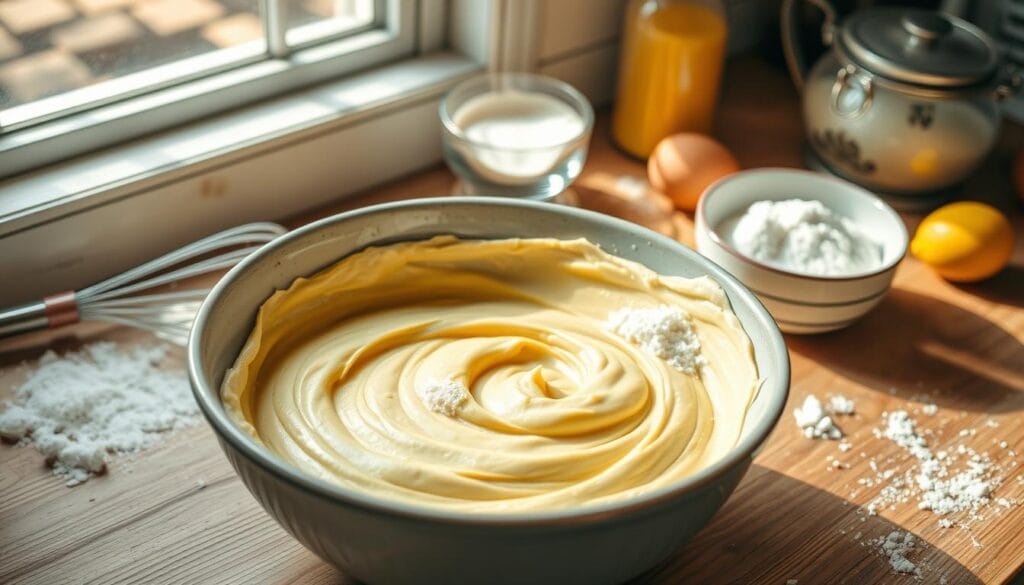
The resting period for Rested Madeleine Batter is crucial for creating exceptional French pastries. It’s when the magic happens. Your patience is crucial for those perfect, delicate madeleines.
During the rest time, several important things happen:
- Gluten relaxes, making the crumb tender
- Flour fully hydrates, improving texture
- Butter solidifies, enhancing structure
- Flavors develop and get stronger
Professional bakers know resting the batter is essential. Letting it rest in the fridge for 1-2 hours (or overnight) makes the madeleines golden and bumpy.
“Patience is the secret ingredient in creating perfect madeleines” – French Pastry Chef
The rest time stabilizes the mixture. It lets eggs warm up and ingredients mix well. This makes the madeleines light and golden, irresistible to eat.
Pro tip: Always keep your batter in a sealed container. Your madeleines will be amazing in taste and texture!
The Science Behind Rested Madeleine Batter
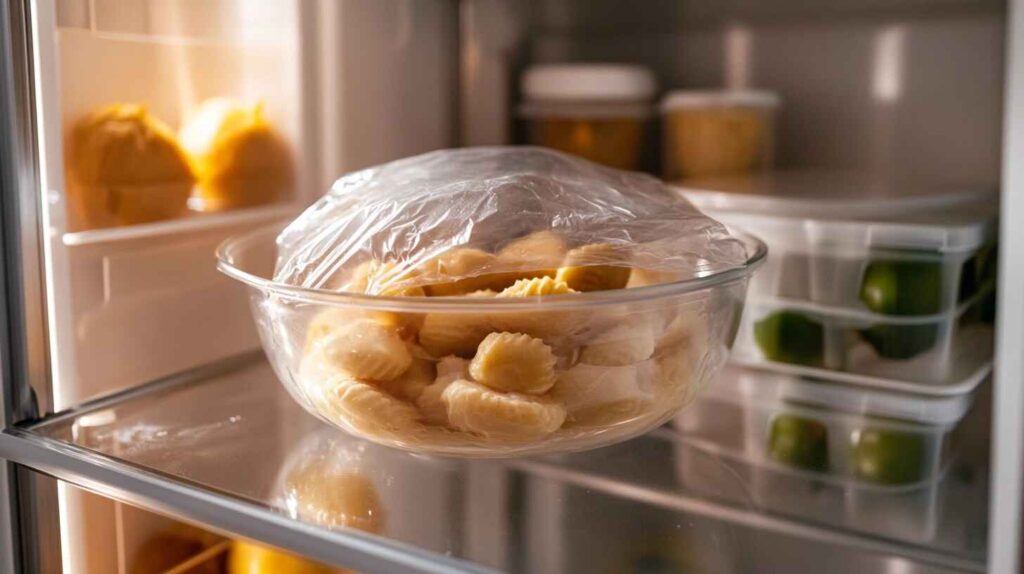
Perfect madeleines need a deep understanding of the science behind resting batter. The baking process changes the batter in ways that make these French cookies truly special.
Resting your batter is when the magic happens. It’s a time when important changes take place. These changes affect the texture and taste of your madeleines.
Gluten Development and Relaxation
Gluten in the flour relaxes during rest. This is key for a tender crumb. The batter becomes smoother and more even.
- Gluten strands soften and become more pliable
- Flour particles fully hydrate
- Batter becomes more uniform in texture
Temperature Control Benefits
Resting helps the batter cool and stabilize. This is crucial for the madeleine’s signature bump and even baking.
| Resting Time | Temperature Impact | Texture Result |
|---|---|---|
| 30 minutes | Slight cooling | Improved structure |
| 1 hour | Complete temperature stabilization | Perfect crumb texture |
Chemical Reactions During Rest Period
Flavor development happens as ingredients mix. Eggs, butter, and sugar undergo subtle chemical changes that boost the taste and smell of your madeleines.
“The magic of madeleines lies in the patience of their preparation.” – French Pastry Chef
By grasping these scientific principles, you’ll turn making madeleines into a true art form.
The Perfect Resting Time for Your Rested Madeleine Batter
Nailing the Rested Madeleine Batter period is essential for achieving the perfect French treat pastries. Many home bakers skip this step, but pro chefs know it’s all about patience. This patience is what makes those iconic shell-shaped treats.
The right resting time can make or break your madeleine recipe. Experts say you should chill your batter for at least 12 hours. Overnight resting is the best way to get that perfect recipe.
“A well-rested batter is the foundation of a perfect madeleine” – French Pastry Experts
Why Resting Matters
- Allows gluten to relax completely
- Hydrates flour and leavening agents
- Develops deeper flavor profiles
- Helps create the signature madeleine bump
Time and temperature are crucial for Rested Madeleine Batter. Here’s everything you need to know for perfect results every time!
| Resting Duration | Temperature | Expected Result |
|---|---|---|
| 2-4 hours | Refrigerated (35-40°F) | Basic texture improvement |
| 12-24 hours | Refrigerated (35-40°F) | Optimal texture and flavor development |
| 24-48 hours | Refrigerated (35-40°F) | Maximum flavor complexity |
Pro tip: Always cover your batter with plastic wrap. This keeps moisture in and prevents oxidation.
When you’re ready to bake, take the batter out of the fridge. Let it sit at room temperature for 10-15 minutes. This warming helps get that golden outside and soft inside.
Creating the Iconic Madeleine Bump
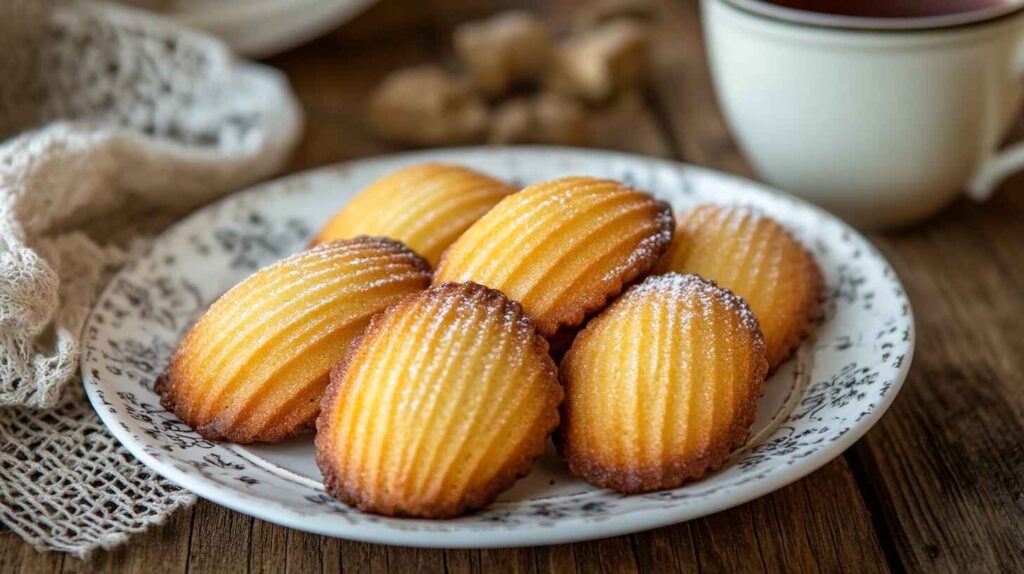
Making the perfect madeleine bump is an art that needs precision and understanding of baking techniques. The signature hump of these French pastries isn’t by chance. It’s the result of careful preparation and specific baking methods.
Temperature Shock Magic
The famous madeleine bump comes from a temperature shock technique. When cold batter goes into a hot oven, it rises quickly. Bakers suggest these tips for making madeleines:
- Preheat the oven to 400°F
- Chill the batter for at least one hour before baking
- Use a metal madeleine pan for best results
Leavening Agent Secrets
Choosing the right leavening agents is key to that iconic bump. Eggs are especially important. Using room temperature eggs helps with a consistent rise and texture.
| Ingredient | Impact on Madeleine Bump |
|---|---|
| Room Temperature Eggs | Provides better volume and rise |
| Cornstarch | Helps create lighter texture |
Selecting the Perfect Pan
Your madeleine pan is more than a baking vessel. It’s crucial for the classic shell shape. Metal pans with deep, well-defined shells are best. A digital kitchen scale helps with precise batter distribution.
Pro tip: Fill madeleine molds about three-quarters full to allow room for the signature bump.
Mastering these techniques will help you make madeleines with a beautiful, distinctive hump. They will look great and taste deliciously light.
Essential Ingredients for Perfect Madeleines
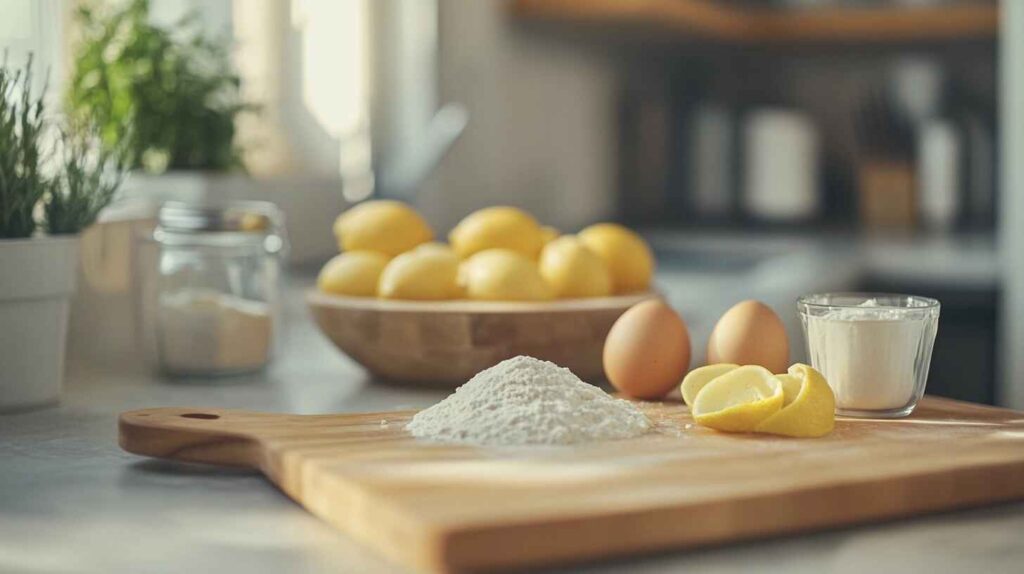
To make the best madeleine recipe, start with top-notch ingredients. These ingredients bring the real taste of France to your kitchen. Madeleines, with their delicate shape, need careful picking of ingredients.
- Unsalted butter (preferably European-style for richer flavor)
- Fresh large eggs at room temperature
- Granulated sugar
- All-purpose flour (1 cup recommended)
- Baking powder
- Pure vanilla extract
For a better French dessert, follow these pro tips:
- Use room temperature eggs for better mixing
- Choose high-quality butter with more fat
- Sift dry ingredients to avoid lumps
- Add a bit of honey for extra moisture
“The secret to an exceptional madeleine lies in the quality of its ingredients.” – French Pastry Chef
The best madeleine recipe needs the right mix of ingredients. You’ll need 3 large eggs and 3/4 cup granulated sugar. Whisk them for 3-4 minutes until thick and pale. This makes the madeleines light and airy, making them irresistible.
How you handle ingredients greatly affects your madeleines. Use fresh eggs, high-fat butter, and precise amounts. This ensures your madeleines turn out golden, shell-shaped, and melt in your mouth.
Common Mistakes to Avoid When Resting Madeleine Batter
Making perfect madeleines needs careful attention. Even skilled bakers can make mistakes. Knowing common errors helps you get those lovely, shell-shaped treats right every time.
Temperature Control Challenges
Getting the right temperature is key for madeleine batter. If it sits at room temperature too long, it can lose its shape. Cold ingredients are essential for making those light, airy madeleines.
- Keep butter and eggs cool before mixing
- Refrigerate batter immediately after preparation
- Use a chilled mixing bowl to maintain optimal temperature
Timing Mistakes to Avoid
How long you let the batter rest is very important. Experts say to rest it for at least 2 hours. But, letting it chill overnight is even better.
“Patience is the secret ingredient in creating perfect madeleines.” – Pastry Chef Marie Laurent
| Resting Time | Batter Quality Impact |
|---|---|
| Less than 1 hour | Flat, dense texture |
| 2-3 hours | Improved flavor and rise |
| Overnight | Best texture and flavor development |
Storage Secrets for Perfect Batter
Storing batter right is crucial. Always keep it in an airtight container or piping bag in the fridge. This keeps it moist and its shape intact.
- Use glass or ceramic containers with tight-fitting lids
- Cover surface with plastic wrap to prevent air exposure
- Store in the coldest part of your refrigerator
Pro tip: Never leave your madeleine batter at room temperature for extended periods. Quick chilling and careful storage are your best friends in achieving bakery-quality results.
Professional Tips for Madeleine Success
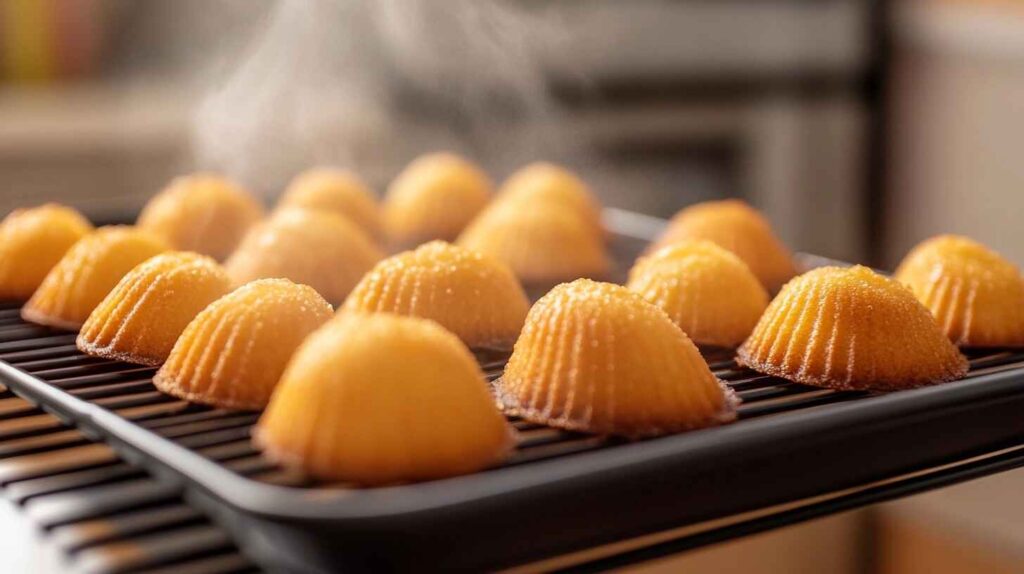
Baking madeleines is all about precision and secret tips. Professional bakers say success comes from the details of your technique and how you prepare ingredients.
Choosing the right equipment is key for madeleine baking. A metal madeleine pan is best because it conducts heat well, giving that golden-brown look. Invest in a high-quality pan to elevate your baking game.
- Sift dry ingredients thoroughly to ensure even distribution
- Use a piping bag for precise batter placement
- Chill prepared madeleine pans in the freezer before filling
Temperature control is crucial for baking madeleines. Start with a high oven temperature of 400°F for the first 3 minutes, then lower it to 365°F to finish. This method helps create the madeleine bump and ensures a light texture.
“The secret to perfect madeleines is patience and precision.” – French Pastry Chef
Try different ingredient ratios to find your favorite flavor. Letting the batter rest in the fridge for at least 4 hours helps flavors mix and gluten relax.
| Baking Tip | Recommended Practice |
|---|---|
| Batter Rest Time | Minimum 4 hours in refrigerator |
| Oven Temperature | Start at 400°F, reduce to 365°F |
| Serving | Best enjoyed warm within an hour of baking |
Remember, madeleines are delicate treats that need your full attention. With practice and these tips, you’ll soon be making bakery-quality madeleines.
Troubleshooting Your Madeleine Recipe
Getting the baking process for madeleines right can be tough, even for pros. Common issues can mess up your French butter cakes. But, with the right tips, you can fix most problems.
Let’s look at the most common problems you might face:
- Flat Madeleines: This usually happens because of:
- Not enough leavening
- Not resting the batter long enough
- Eggs not beaten right
- Dry Texture: This is caused by:
- Baking too long
- Too much flour
- Not measuring ingredients correctly
- Lack of Signature Bump: This is due to:
- Wrong temperature shock
- Wrong pan choice
- Oven temperature not consistent
“The secret to perfect madeleines lies in precision and patience.” – French Pastry Chef
To make sure you succeed, follow these key tips:
- Use a kitchen scale for exact measurements
- Make sure eggs are room temperature
- Rest the batter for at least 1 hour
- Preheat and check your oven
- Choose the right madeleine pan
Remember, practice is key. Every batch of madeleines is a chance to get better. You’ll soon make those delightful, shell-shaped treats that are a joy to eat.
Conclusion
Learning why your Rested Madeleine Batter needs to rest is crucial for perfect French pastry. The best recipe comes from understanding the science behind making batter. By following this guide, you’ll turn simple ingredients into elegant, shell-shaped treats.
Your path to making great madeleines is more than mixing ingredients. The resting time is key. It lets gluten relax, flavors develop, and creates the signature bump. Temperature, ingredient quality, and technique are all important for that light, airy texture.
Whether you bake at home or dream of being a pastry chef, the secrets to perfect madeleines are yours. You’ve learned the key steps, from using high-quality butter to chilling the batter. Try adding lemon zest, almond extract, or lavender to make it your own.
Remember, practice is key. Each batch of madeleines is a chance to get better and connect with French baking tradition. Serve them with your favorite tea or coffee and enjoy your baking skills.







